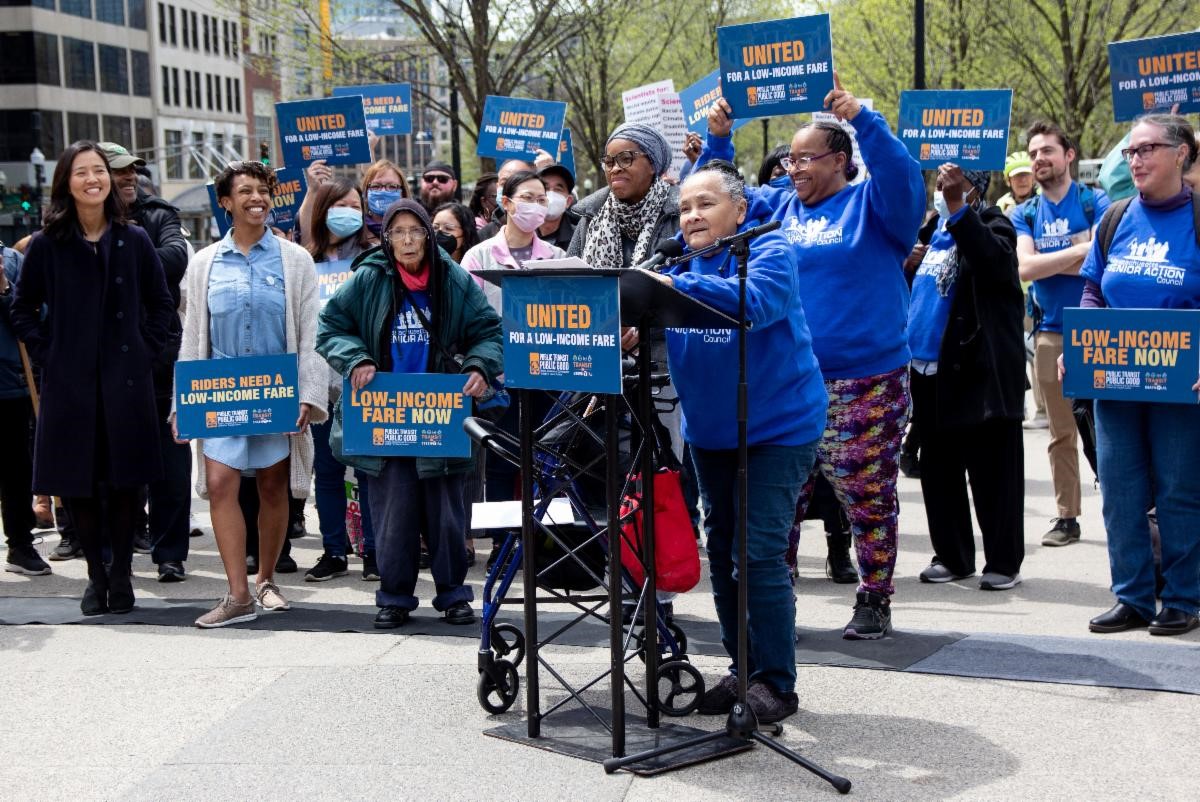Why is it that sometimes you attend a press conference or other speaking event and feel enraptured, moved, and motivated to act – and other times your mind wanders or you wish you had a cup of coffee to get through it?
The difference is careful communications planning.
Public speaking events, particularly featuring a line-up of multiple people, are a chance to tell a captivating story and inspire action. Here are the ingredients to creating an event people remember.
Prepare each speaker to tell a different part of the story. When you read a great newspaper article, you’ll notice that every quote serves a purpose: the person experiencing the event first-hand, the elected official giving the larger community perspective, the academic expert commenting on similar trends. Press conferences or rallies should work the same way, with a thoughtfully curated line-up of speakers, each providing a distinct take on the topic.
A recent rally in support of low-income transit fares, co-organized by the Transit is Essential and Public Transit Public Good coalitions, provides a case study in creating a compelling line-up. The rally featured a business leader talking about why low-incomes fares are good for employers and the economy, a transit conductor and labor leader sharing why MBTA employees want the program on behalf of their passengers, a mayor urging action from fellow elected colleagues, and people who rely on transit offering different perspectives on how transit affordability would benefit their communities.
Work with each speaker in advance so they understand who else is speaking and what points will be most helpful for them to hit. This planning not only creates a better experience for people watching the event, but helps reporters get multiple quotes for their stories at once.
Include first-person experiences. The Public Transit Public Good/Transit is Essential rally was made most effective because of speakers who ride transit talking about what a low-income fare program would mean for them and people they know. "A low-income fare isn’t just good policy, it’s an urgent need in the lives of riders. So the most powerful speakers—and the true experts on the issue—are the people who are fighting for their communities’ mobility and well-being," said Collique Williams, Organizer at Community Labor United.
Give strict time limits. Some speakers will break them, so plan accordingly. Nothing gets a news reporter down like showing up to a press conference to see nine speakers on a list, seven of whom are elected officials who view time limits as suggestions and will likely all spend multiple minutes thanking each other before going into their “real” remarks. We’ve found that since the pandemic, audiences have even less of an appetite for long speeches, so keep your program tight – with total remarks at 15-20 minutes, then time for questions. Do the math of what that means for each speaker, then subtract even another minute for each so you have room if someone goes long.
Widen the reach of the speakers as much as possible. Many key audiences for mobility advocates – such as reporters, policymakers, and civic and business leaders – now operate in a hybrid world. Getting everyone you want to an in-person event is increasingly challenging, so bring your speakers’ content to them. Low-income fare rally organizers did this in multiple ways. First, the event was trilingual, creating opportunities for multilingual media and other engagement. The organizers also live-streamed and recorded the event on Facebook, allowing everyday people to watch at home, but also reporters who couldn’t attend in person but still were able to write stories. A concise and clear video was then distributed in the days after the rally as an enduring asset for groups’ websites and social media platforms.
Great speaking events look easy but require strategy and preparation. Take the time to plan and your audience will thank you.
###

